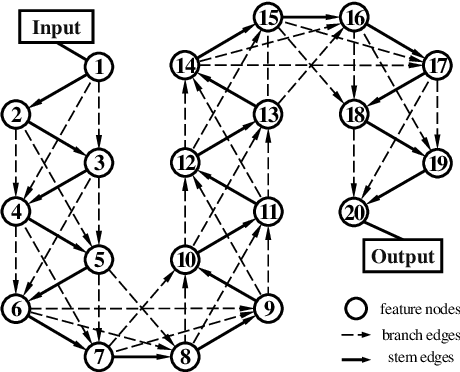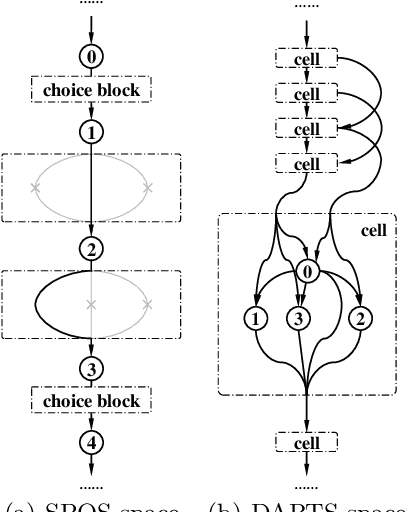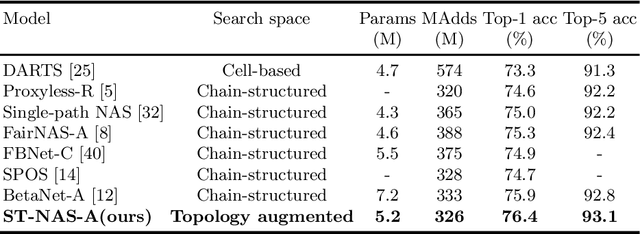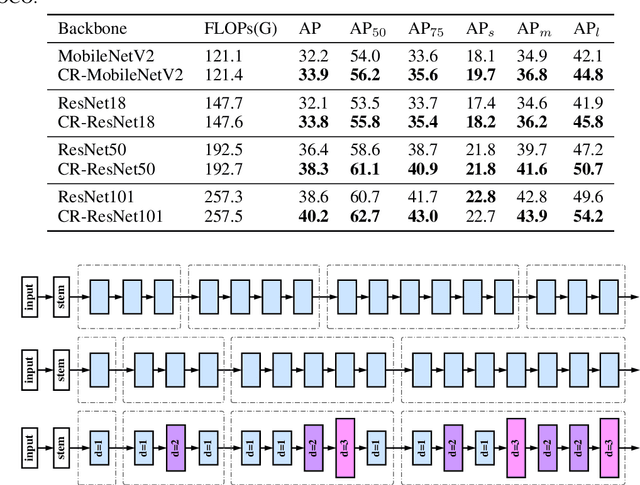Ronghao Guo
Powering One-shot Topological NAS with Stabilized Share-parameter Proxy
May 21, 2020



Abstract:One-shot NAS method has attracted much interest from the research community due to its remarkable training efficiency and capacity to discover high performance models. However, the search spaces of previous one-shot based works usually relied on hand-craft design and were short for flexibility on the network topology. In this work, we try to enhance the one-shot NAS by exploring high-performing network architectures in our large-scale Topology Augmented Search Space (i.e., over 3.4*10^10 different topological structures). Specifically, the difficulties for architecture searching in such a complex space has been eliminated by the proposed stabilized share-parameter proxy, which employs Stochastic Gradient Langevin Dynamics to enable fast shared parameter sampling, so as to achieve stabilized measurement of architecture performance even in search space with complex topological structures. The proposed method, namely Stablized Topological Neural Architecture Search (ST-NAS), achieves state-of-the-art performance under Multiply-Adds (MAdds) constraint on ImageNet. Our lite model ST-NAS-A achieves 76.4% top-1 accuracy with only 326M MAdds. Our moderate model ST-NAS-B achieves 77.9% top-1 accuracy just required 503M MAdds. Both of our models offer superior performances in comparison to other concurrent works on one-shot NAS.
Computation Reallocation for Object Detection
Dec 24, 2019



Abstract:The allocation of computation resources in the backbone is a crucial issue in object detection. However, classification allocation pattern is usually adopted directly to object detector, which is proved to be sub-optimal. In order to reallocate the engaged computation resources in a more efficient way, we present CR-NAS (Computation Reallocation Neural Architecture Search) that can learn computation reallocation strategies across different feature resolution and spatial position diectly on the target detection dataset. A two-level reallocation space is proposed for both stage and spatial reallocation. A novel hierarchical search procedure is adopted to cope with the complex search space. We apply CR-NAS to multiple backbones and achieve consistent improvements. Our CR-ResNet50 and CR-MobileNetV2 outperforms the baseline by 1.9% and 1.7% COCO AP respectively without any additional computation budget. The models discovered by CR-NAS can be equiped to other powerful detection neck/head and be easily transferred to other dataset, e.g. PASCAL VOC, and other vision tasks, e.g. instance segmentation. Our CR-NAS can be used as a plugin to improve the performance of various networks, which is demanding.
 Add to Chrome
Add to Chrome Add to Firefox
Add to Firefox Add to Edge
Add to Edge